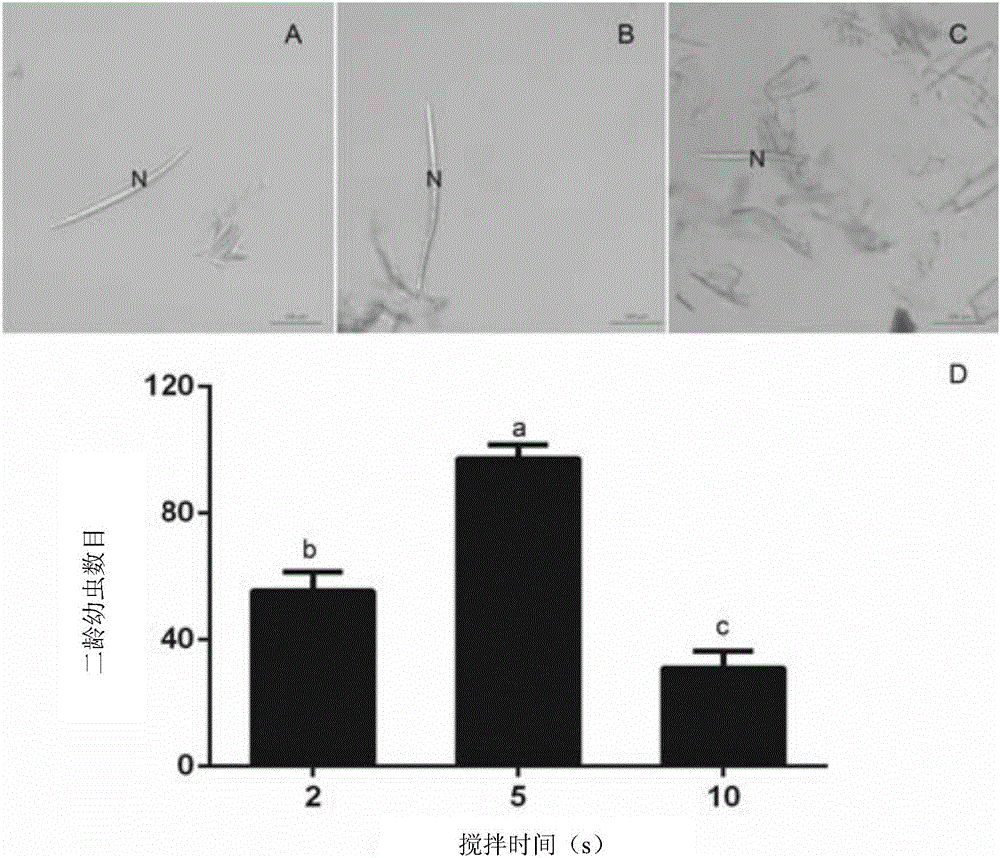Method for identifying resistance of plant to meloidogyne
A technology for plant roots and nematodes, which is applied in the field of identifying plant resistance to root-knot nematodes, and can solve problems such as low separation effect, high requirements for instruments and equipment, and long dyeing time
- Summary
- Abstract
- Description
- Claims
- Application Information
AI Technical Summary
Problems solved by technology
Method used
Image
Examples
Embodiment 1
[0048] Embodiment 1, the method for identifying plant resistance to root-knot nematode
[0049] 1. Preparation of tomato samples inoculated with root-knot nematodes
[0050] Tomatoes to be tested: tomato plants (Lycopersicon esculentum Mill cv Castlemart).
[0051] 1. Place the second instar larvae (J2) of Meloidogyne incognita in an aqueous solution to obtain a suspension (concentration: 250 larvae / mL).
[0052] 2. Take the tomato plant (5 weeks old, 4-5 true leaves) to be tested, and ensure that the soil where the tomato grows is moist, so as to facilitate the burrowing and the survival and movement of nematodes. Use a glass rod to evenly punch 4 holes 1 cm deep at a distance of 3 cm from the tomato stem, and evenly inject the suspension obtained in step 1 into the holes with an inoculation amount of 500 plants / plant, and bury the surface with a soil matrix. Seven days after inoculation, the root knots of the plants were taken for testing.
[0053] 2. Observation of paraf...
PUM
 Login to View More
Login to View More Abstract
Description
Claims
Application Information
 Login to View More
Login to View More - R&D Engineer
- R&D Manager
- IP Professional
- Industry Leading Data Capabilities
- Powerful AI technology
- Patent DNA Extraction
Browse by: Latest US Patents, China's latest patents, Technical Efficacy Thesaurus, Application Domain, Technology Topic, Popular Technical Reports.
© 2024 PatSnap. All rights reserved.Legal|Privacy policy|Modern Slavery Act Transparency Statement|Sitemap|About US| Contact US: help@patsnap.com









